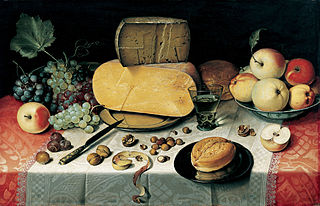 W
WThe Benadryl challenge is an internet challenge which emerged in 2020, and revolves around the deliberate consumption, abuse and overdose of the antihistamine medicine diphenhydramine, commonly sold in the United States under the brand name Benadryl. The challenge, which spread via the social media platform TikTok, instructs participants to film themselves consuming large doses of Benadryl for the purpose of 'tripping', or hallucinating.
 W
WA chocoholic is a person who craves or compulsively consumes chocolate. The word "chocoholic" was first used in 1968, according to Merriam-Webster. It is a portmanteau of "chocolate" and "alcoholic". The term is used loosely or humorously to describe a person who is inordinately fond of chocolate; however, there is medical evidence to support the existence of actual addiction to chocolate. Psychoactive constituents of chocolate that trigger a ‘feel-good’ reaction for the consumer include tryptophan and phenylethylamine, which may contribute to cravings and addiction-like responses, particularly in people with specific genetic alleles. The quantity of sugar used in chocolate confections also impacts the psychoactive effects of chocolate.
 W
WConsumption of Tide Pods is the act of ingesting laundry detergent pod Tide Pods. Tide Pods are a line of laundry detergent pods produced under the Procter & Gamble's Tide brand name which, like most detergents, can be deadly if ingested, and which have been labeled as a health risk by the Centers for Disease Control and Prevention. There have been numerous media reports discussing how children and those with dementia could endanger their health or life by consuming the pods, mistaking them for candy. Between 2012 and 2013, poison control centers reported over 7,000 cases of young children eating laundry pods, and ingestion of Procter & Gamble laundry pods had resulted in six deaths by 2017. In response to the dangers, Procter & Gamble changed Tide Pod containers to an opaque design, introduced warning labels and added a bitter tasting chemical to the pod contents.
 W
WFinger foods are usually defined as individual portions of food that are small. The ideal finger food usually does not create any mess, but this criterion is often overlooked in order to include foods like tacos. Unfortunately, the complete history of such a broad class of foods is difficult to trace, but one history begins with the French canapés. While the history of finger foods is complex, they are frequently used in the fast food industry and served for social events.
 W
WIntermittent fasting, also known as intermittent energy restriction, is an umbrella term for various meal timing schedules that cycle between voluntary fasting and non-fasting over a given period. Methods of intermittent fasting include alternate-day fasting (ADF), periodic fasting, and daily time-restricted feeding. A type of periodic fasting known as the 5:2 diet was popularised in the UK and Australia by Michael Mosley around 2012.
 W
WThe Okinawa diet describes the eating habits of the indigenous people of the Ryukyu Islands, which is believed to contribute to their exceptional longevity. It is also the name of a weight-loss diet based on this.
 W
WA serving size or portion size is the amount of a food or drink that is generally served.
 W
WSupersize vs Superskinny is a British television programme on Channel 4 that features information about dieting and extreme eating lifestyles. One of the main show features is a weekly comparison between an overweight person, and an underweight person. The two are brought to a feeding clinic, and live together for five days, swapping diets all supervised by Dr Christian Jessen.
 W
WTable manners are the rules used while eating, which may also include the use of utensils. Different cultures observe different rules for table manners. Each family or group sets its own standards for how strictly these rules are to be followed.
 W
WMarije Vogelzang is a Dutch "food", or "eating", designer who focuses on how people design their food habits, ways and rituals. She regularly works as a designer for organizations and a food industry consultant. She became the head of the food department at the Design Academy Eindhoven in 2014. Her 2017 "Volumes" project, focused on the design of eating devices which help eaters think their plates are fuller than they are, to reduce overeating.